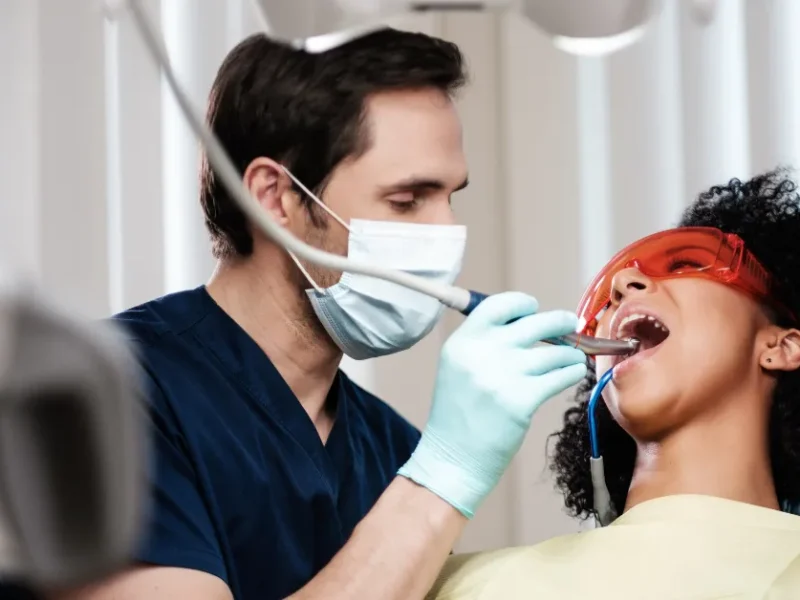Introduction
Behind every brilliant smile lies a fascinating world of scientific precision and chemical innovation. The modern dental hygienist’s toolkit represents decades of advancement in both technology and chemistry, designed to maintain oral health while ensuring patient comfort and safety. When visiting a hygienist Richmond practice, patients often see only the surface of what is truly a sophisticated array of instruments and solutions.
The Science of Sterilisation
At the heart of every dental practice’s operations lies a rigorous sterilisation protocol that ensures maximum infection control and patient safety. The process involves precise chemical reactions that eliminate microorganisms while maintaining the integrity of dental instruments.
Chemical Agents in Modern Sterilisation
Modern dental hygienists rely on a variety of chemical agents to maintain sterility in their practice. These include:
- Quaternary ammonium compounds
- Hydrogen peroxide-based solutions
- Enzymatic cleaners
- High-level disinfectants
Scaling and Polishing: A Chemical Perspective
The process of scaling and polishing, a cornerstone of professional dental hygiene, involves more chemistry than most people realise. Recent studies on biofilm removal techniques have revolutionised the approach to dental cleaning, combining mechanical action with chemical agents for optimal results.
Advanced Cleaning Compounds
Today’s hygienist practices, including those in Richmond, utilise sophisticated cleaning compounds that work at a molecular level. These solutions are designed to:
- Break down bacterial biofilms
- Dissolve mineral deposits
- Protect enamel integrity
- Provide lasting protection against decay
Monitoring and Quality Control
Quality assurance in dental hygiene relies heavily on chemical indicators. Advanced monitoring systems using chemical and biological indicators ensure that sterilisation procedures meet strict healthcare standards. This scientific approach to quality control is particularly evident in modern hygienist practices, where patient safety is paramount.
Protective Solutions and Their Composition
Modern dental hygienists employ a range of protective solutions that incorporate advanced chemical formulations. These solutions create barriers against bacterial growth while promoting the remineralisation of tooth surfaces. The chemistry behind these products demonstrates the sophisticated approach taken by today’s dental professionals.
Fluoride Applications
Professional fluoride treatments represent one of the most significant chemical interventions in preventive dental care. The compounds used interact with tooth enamel at a molecular level, creating stronger, more resistant surfaces through a process called ionic exchange. When patients visit their hygienist Richmond practitioner, these treatments form a crucial part of their preventive care routine.
Antimicrobial Innovations
The field of dental hygiene continues to evolve with the development of new antimicrobial compounds. These innovations include:
- Time-release antiseptic formulations
- Bioactive glass particles
- Smart polymers that respond to pH changes
- Natural antimicrobial compounds
The Role of pH Balance
Understanding and maintaining proper pH levels is crucial in dental hygiene. Hygienists regularly work with solutions that help neutralise acidic conditions in the mouth, preventing enamel erosion and creating an environment less hospitable to harmful bacteria. This delicate chemical balance requires precise formulations and careful application techniques.
Environmental Considerations
Modern dental hygiene practices increasingly focus on environmentally responsible chemistry. This includes the development of biodegradable cleaning solutions and the use of eco-friendly sterilisation methods that maintain efficacy while reducing environmental impact. These advances demonstrate the profession’s commitment to both patient and planetary health.
Conclusion
The chemistry behind dental hygiene tools and techniques represents a fascinating intersection of science and healthcare. From the molecular interactions of cleaning compounds to the precise formulations of protective solutions, every aspect of a hygienist’s toolkit is carefully designed and tested. This scientific foundation ensures that patients receive the highest standard of care while benefiting from continuous innovations in dental chemistry. As our understanding of oral chemistry continues to advance, so too will the sophisticated tools and techniques used in professional dental hygiene.


